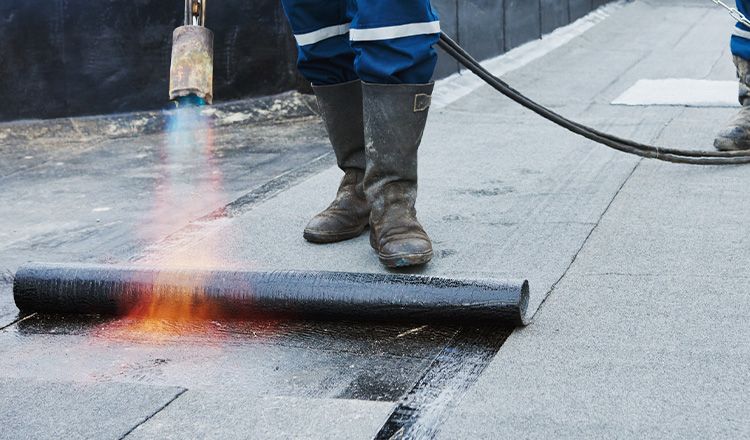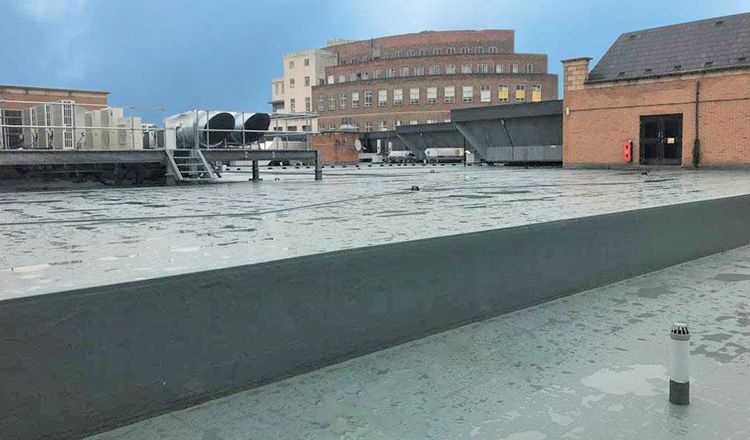Hot works refers to any process that uses open flames. In flat roofing that applies to the use of gas torch, blow torches, blow lamps and flame guns in the application of bituminous type waterproof membranes. Cold liquid applied waterproof membranes require no such equipment or heat. While both heat applied and cold liquid applied waterproofing have their merits, there's a compelling case for choosing cold liquid applied solutions. In this post, we'll explore the key differences and highlight the many advantages of cold liquid applied waterproofing.
The Hot Works Conundrum
Hot works that encompass techniques such as hot melt, torch-on membranes, bituminous membranes, and felt membranes rely on the application of either heat, torches, or open flames, which inevitably introduce a host of concerns and challenges.
Risks of Hot Works
- Fire Hazards: Hot works come with inherent fire hazards. The use of torches and heat sources poses significant safety risks. Suitable fire extinguishers must be kept available for immediate use.
- Stringent Safety Measures: Implementing hot works requires trained personnel and the appropriate permit to work and fire watches to prevent roof fires taking hold. The advice in the NFRC Safe to Torch campaign recommends a continuous fire watch while work is carried out, and active monitoring for at least one hour following cessation of work and at least one more check two hours after the end of hot works.
- Hot Work Permits and Increasing Insurance Costs: Special permits are often required for hot works, and insurance premiums tend to be considerably higher due to the elevated risk. Some insurance companies insist on alternatives to hot works.
- High-Risk Activities: For refurbishment projects, buildings often remain occupied and so safety concerns are paramount.
Cold Liquid Applied Waterproofing: The Safer and Smarter Choice
In contrast, cold liquid applied waterproofing offers a wealth of benefits that make it a superior solution for many roofing projects. Let's delve into these advantages.
Elimination of Fire Risks
Cold liquid applied waterproofing eliminates the inherent fire risks associated with hot works. This is a crucial safety consideration, for workers, building occupants and surrounding communities.
Rapid Application
Cold liquid systems are renowned for their rapid curing times. For example, Triflex PMMA (polymethyl methacrylate) systems can achieve rainproof status in as little as 30 minutes. This means that your roofing project can progress swiftly, reducing downtime and potential disruptions.
Versatility and Sustainability
Cold liquid applied systems are highly versatile. They can be used as overlays for existing failing roof waterproofing, minimising waste and reducing the environmental footprint of your project. These systems can also withstand foot traffic quickly, making them ideal for new construction where the risk of punctures for some membranes from continued works is a concern.
Minimal Equipment and Disruption
Compared to hot works, cold liquid applied systems require very little equipment. This reduces the logistical challenges linked with transporting equipment associated with hot works to the roof.
Triflex cold liquid applied systems are applied in a single process, meaning its faster than some other cold liquid applied membranes or hot works too.
Superior Adhesion Strength and Flexibility
Triflex PMMA cold liquid applied resins offer excellent adhesion strength and flexibility. They create a seamless, highly flexible membrane that adheres well to various substrates, ensuring long-term protection for your flat roof.
In conclusion, when comparing hot works to cold liquid applied waterproofing, the latter emerges as the superior choice in many aspects. The elimination of fire risks, speed of application, versatility and minimal disruption make cold liquid applied waterproofing the smart and safe choice for your roofing projects. So, when you're faced with the decision, consider the numerous advantages of cold liquid applied systems and ensure a safer and more efficient flat roofing solution.


